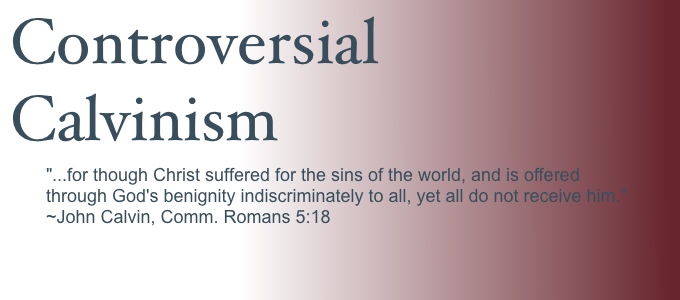For the last essay in this series, I want to take a couple of real life examples and analyze them using Venn diagrams. If you stumble across this in the backwaters of the internet and have a question about logic or Venn diagrams, please feel free to add a comment.
My friend Terry West complains about an argument for believer's baptism. He writes,
Premise 1. Believers are to be baptized.
Premise 2. Infants cannot believe.
Conclusion 3. Therefore Infants cannot be baptized.Now, as has been stated several times and in several ways in the last two articles, the most glaring fallacy is that the subject of premise one and two are not the same, therefore what is true of the subject of premise one cannot be said to be untrue of the subject of premise two.
We can analyze the argument using Venn diagrams and not worry about a verbal justification for any objections. The terms are Believers, Baptized, and Infants. Obviously we need three circles to represent these terms.

And if we take the first premise as All Believers are to be baptized, then we must shade out the part of the Believers circle that falls outside the Baptized circle. The shading represents emptiness, so the diagram below means that there are not any believers who are not baptized.

The second premise says that infants are not believers, so we shade all of the Infants circle that falls within the Believers circle. This will show that all the infants are not believers.

Looking at the results in the above diagram, we see that part of the Infants circle that falls within the Baptism circle remains unshaded. Thus the conclusion, Infants cannot be baptized is unsupported.
But we want to rethink this argument a bit. Obviously the first premise, "all believers are baptized" is untrue. The thief on the cross is an example, or Abraham. The dispute is about who is properly to be baptized, so we should say "all believers are properly to be baptized." But really, this doesn't get at the force of the argument, so we should really put the major premise this way: only Believers are Properly Baptized.
Or, more correctly: All Properly Baptized Persons are Believers So now the argument will look like this:
All Properly Baptized Persons are Believers;
no Infants are Believers;
therefore no Infants are Properly Baptized Persons.
The major premise of this argument would look like this when diagramed:

This first diagram shows that all properly baptized persons are believers. Now we add shading to represent the minor premise, which is, "no infants are belivers."

With the argument revised like this, the conclusion "no infants are properly baptized persons" is valid. If the premises are true, then the conclusion is certainly established.
Terry West objects that this is circular reasoning. The syllogism itself is not circular. But the argument does assume the truth of the major premise, "all properly baptized persons are believers." If that premise is put in dispute, (or the minor premise, for that matter) then it is, of course, incumbent on the arguer for believers' baptism to support that premise. Terry would object that the major premise is perhaps untrue and unsupported. But considering this question is taking us beyond the use of Venn diagrams into the question of Christian baptism. (I remain a credo-baptist, by the way.) I just wanted to look at the diagrams to show how they would be drawn with a slightly different argument. The exercise is also useful to show that one must be very careful in defining the terms for the syllogism and constructing the premises accurately. The diagrams themselves are extremely useful in analyzing and justifying critiques of categorical syllogisms.
Technorati Tags: logic, theology, baptism, venn diagrams



No comments:
Post a Comment